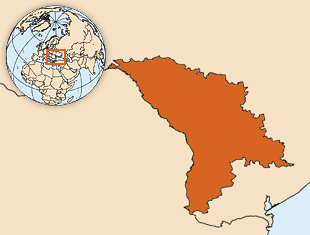Campaigns
Up to now, the most common approach used for seasonal influenza vaccination target groups, including pregnant women, is via campaigns shortly before or at the beginning of an influenza season. Campaigns can vary in approach, ranging from intensive communication or social mobilization efforts that encourage pregnant women to go to health centres to be vaccinated, to organized mass vaccination campaigns that directly provide influenza vaccine to pregnant woman and may facilitate access to remote populations. Some of the factors to consider when deciding whether to conduct vaccine delivery as a campaign are included in box:
Campaign-style delivery
When deciding whether to conduct vaccine delivery as a campaign (seasonal or outreach), policy-makers should consider several factors that may affect the capacity needed and the budget required of the immunization programme. The questions below highlight some issues that decision-makers should consider with regard to campaign-style delivery of maternal influenza vaccination:
- TIMING: What is the timing/seasonality of the circulating influenza virus in the country? How many months in advance (e.g. at least 3 months) should the campaign be planned? Has a strategy been developed to address logistics issues related to vaccination timing? Have other health strategies or events (e.g. vaccination days) that could cause interference or promote synergy been identified? (see section 5.4)
- SUPPLY CHAIN: Is vaccine locally produced or procured outside the country? Is vaccine procurement ensured sufficiently in advance (e.g. 612 months)? Do current surveillance measures allow vaccine match to be identified? Has a planning group been set up to plan the annual switch to the most recent vaccine formulation? Do storage and distribution systems have sufficient capacity to distribute within the projected period?
- USE of EXISTING SERVICES: Can lessons learned from existing vaccination campaigns or seasonal health campaigns serve to inform seasonal influenza vaccination of pregnant women? Could leaders and staff from these campaigns (e.g. deworming, vitamin A supplements, HIV screening) be involved to champion or otherwise support the implementation of the influenza campaign in pregnant women.
- HEALTH SYSTEM CAPACITY: Is the capacity (e.g. human resources, supply chain, cold chain) of existing health campaign services (screening, vaccination, treatment) sufficient to include maternal influenza vaccination?
- SAFETY and SYSTEM EFFICIENCY: Is a pregnancy registry and monitoring system available to support monitoring and evaluation? If not, how can systems (registry and vaccination cards) be developed to monitor coverage? Is an AEFI reporting system in place? How can pregnant women best be reached?
- RESOURCES AND COSTS: Has the country evaluated the impact of other health campaigns and estimated their costs. Can these cost estimations be used to estimate the costs of influenza vaccination campaigns? What is the expected impact of a campaign in the coverage of other vaccines and services (in particular services for pregnant women)? Are existing resources (vaccinators, cold chain, distribution system) sufficient to ensure implementation of influenza vaccination of pregnant women?
Campaign-style delivery can put pressure on or even disrupt routine services with limited capacity. Their use should be considered following an assessment of delivery service capacities in place, as well as scheduling and duration of the campaign. If antenatal care services are involved in the campaign, close coordination between the EPI manager and the RMNCAH manager is essential to allow for capacity assessment, planning of roll-out and distribution of responsibilities among stakeholders at all levels.
Using annual vaccination weeks or vaccination days in countries with clearly defined seasonal influenza peaks is helpful to raise awareness of the vaccination and consequently can help to increase vaccination coverage. Building maternal influenza vaccination on existing strategies to reach pregnant women, such as child health days, can further improve reaching these target groups.
To protect pregnant women after the main seasonal peak, a combined approach, offering influenza vaccine by health facilities routinely throughout the influenza season, can help ensure coverage of pregnant women whose pregnancy was not identified during the campaign. Providing routine vaccination for at least three months after the campaign may achieve high coverage of pregnant women.

Moldova
In the WHO European Region, influenza vaccination is mainly provided through pre-seasonal campaigns using existing immunization services. With such an approach, establishing a functional referral system to bridge antenatal care services to immunization services is critical to ensure sufficient uptake.
In the Republic of Moldova, maternal influenza vaccination began in 2009 as part of the broader disease control strategy of pandemic influenza in high-risk populations. Microplanning for maternal influenza vaccination and vaccine forecasting were integrated into the broader EPI vaccine planning activities. Vaccine financing is provided by the national health insurance company while vaccine procurement is integrated with the central procurement services of the Ministry of Health. Management functions, including guidance, training, planning, coverage monitoring, supervision and vaccine supply are performed by epidemiologists from national and district public health centres.
Influenza vaccination is provided during a short period of time before the influenza season begins. It is delivered through the existing immunization system (i.e. through general practitioners, family doctors and nurses) as is the case in several European countries. In Moldova this approach has led to a modest uptake of influenza vaccine among pregnant women. In implementation planning discussions, the establishment of a functional referral system bridging antenatal care services to immunization services is considered a critical factor for increasing vaccination uptake.
Source: Maternal influenza vaccine delivery in Moldova: a case study from the WHO Regional Office for Europe.
